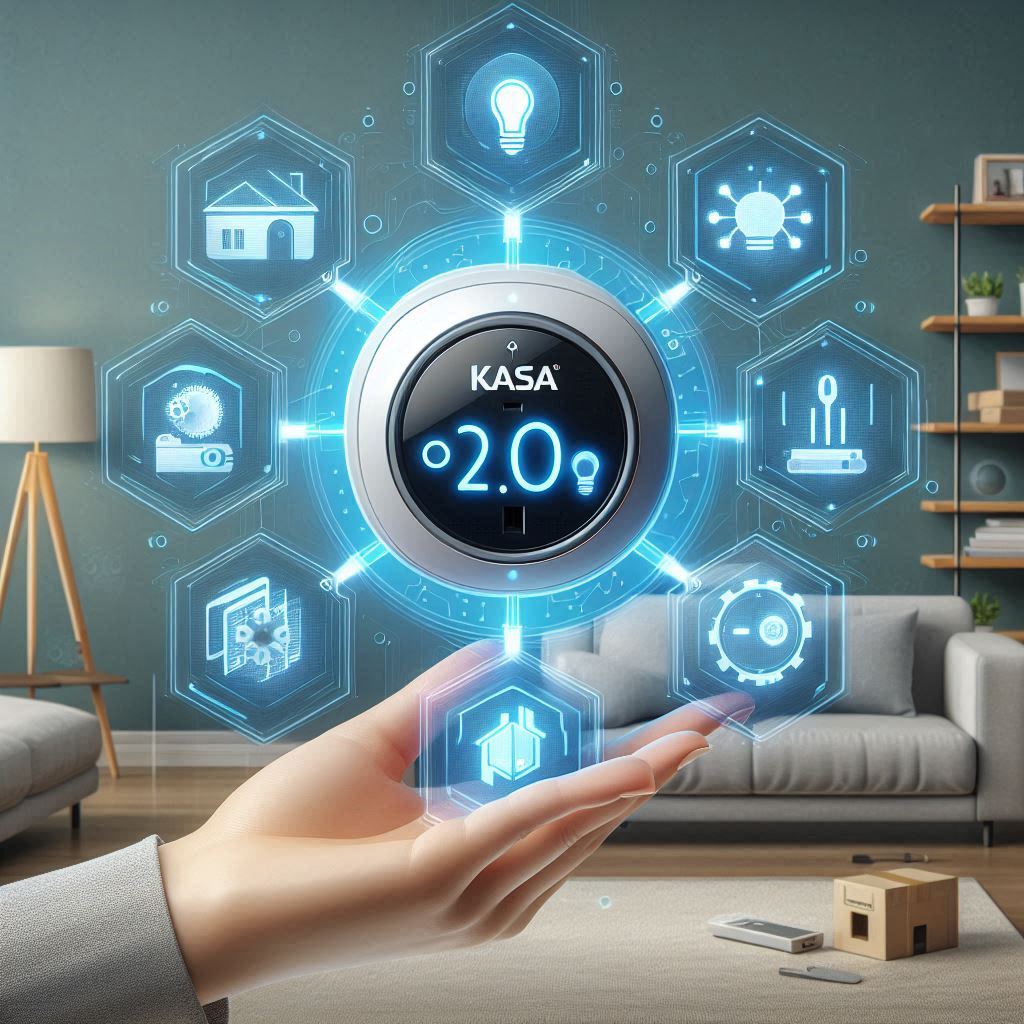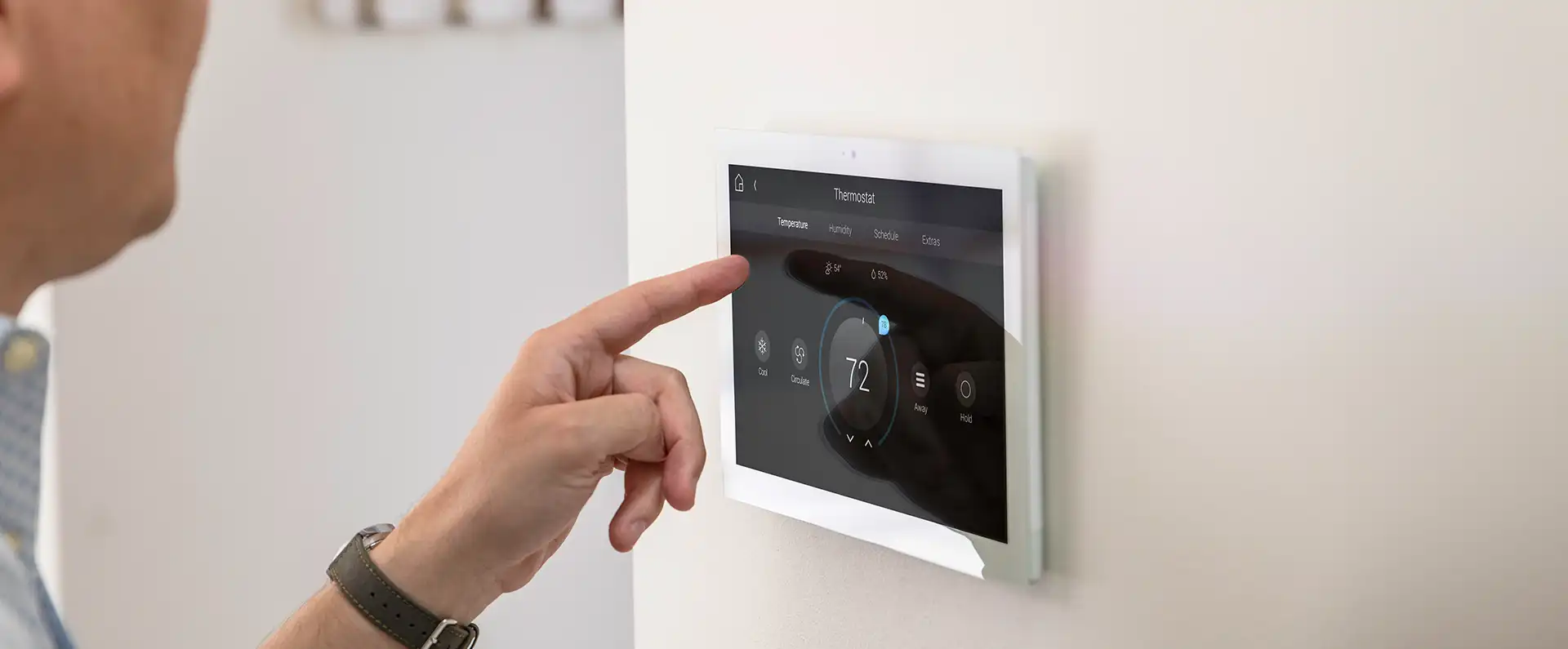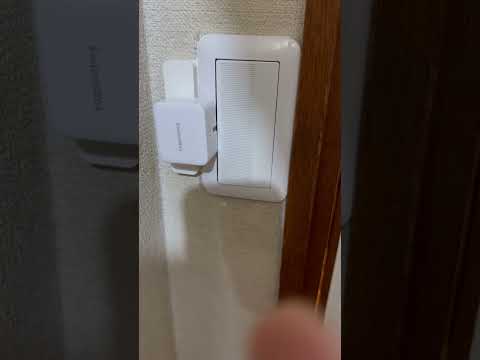Resetting your WiFi camera to its factory settings can be a lifesaver when you’re facing connectivity issues or simply want to start fresh with your device. Whether you’re dealing with a digital camera or an IP security camera, the process varies slightly depending on the model and manufacturer. Here’s a comprehensive guide to help you navigate through the reset process for both types of devices.
Understanding the Reset Process
Before diving into the specifics, it’s crucial to understand what resetting your camera entails. When you reset a WiFi camera, you essentially revert it back to its original factory settings. This action typically erases all custom settings, including Wi-Fi configurations, but preserves personal media files like photos and videos. It’s a useful troubleshooting step for resolving connectivity problems or preparing the device for sale or donation.
Resetting Digital Cameras
For digital cameras, the reset process often involves navigating through the camera’s menu system. Here’s a general approach:
- Check the Manual: First, consult your camera’s user manual or the manufacturer’s website for specific instructions tailored to your model. The reset process can vary significantly among different camera brands and models.
- Menu Navigation: Look for an “Initialize,” “Reset,” or “Factory Reset” option within the camera’s menu. The exact path to this setting depends on your camera’s interface. Common paths include
MENU → Settings → InitializeorMENU → Setup → Initialize. - Performing the Reset: Select the reset option and confirm the action. Your camera will reboot, and upon startup, it will prompt you to set up initial settings like time and date.
- Special Cases: Some cameras might offer partial resets, allowing you to reset only certain settings (e.g., Wi-Fi settings) without affecting others. Always review all available options in your camera’s manual.
Resetting IP Security Cameras
Resetting an IP security camera, such as the IPCAM-WOC2, involves a physical reset switch located on the device itself:
- Locate the Reset Switch: This is usually found in the bundle of wires and dongles attached to the back of the camera. It’s covered by a small plastic cap.
- Power On the Camera: Ensure the camera remains powered on during the reset process. You’ll see the camera’s status LED indicating its current state.
- Press and Hold the Reset Button: With the camera powered on, press and hold the reset button until the status LED starts blinking white. Release the button immediately after this happens.
- Reconfigure Wi-Fi Settings: After resetting, power off the camera, wait a few moments, and then power it back on. You’ll need to reconnect it to your Wi-Fi network and reconfigure any other settings as needed.
- Total Connect 2. Integration: If your camera is integrated with Total Connect 2., remember to delete the camera from your account before resetting. After resetting, you can add the camera back to your account.
Tips for a Smooth Reset Process
- Backup Important Data: Before resetting, consider backing up any important data stored on your camera, especially if you’re planning to sell or donate the device.
- Consult Manufacturer Resources: For specific instructions, always refer to your camera’s user manual or the manufacturer’s official website. They provide the most accurate and up-to-date information.
- Consider Partial Resets: If you’re only facing connectivity issues, consider performing a partial reset instead of a full factory reset. This can save time and preserve your custom settings.
By following these guidelines, you should be able to successfully reset your WiFi camera and resolve any connectivity issues or prepare it for new ownership.
Mastering the Art of Resetting Your WiFi Camera
Navigating the realm of WiFi cameras opens up a plethora of possibilities, but one essential technique stands out – the process of resetting. This section aims to demystify the nuances of WiFi camera resets, highlighting features that go beyond basic functionality. Whether you’re an experienced tech lover or just starting your journey, this detailed guide is designed to shed light on how to unlock your device’s full potential through effective resets.
Understanding the Importance of Resets
Resetting your WiFi camera might seem like a simple task, but its implications are far-reaching. It’s not just about reverting your device to its factory settings; it’s about ensuring optimal performance, enhancing security, and troubleshooting issues efficiently. Imagine your WiFi camera as a tool in a toolbox – regular maintenance, including resets, keeps it sharp and ready for action.
The Process: A Step-by-Step Guide
Preparing for the Reset
Before diving into the reset process, it’s crucial to prepare. Ensure your camera is charged or connected to a power source, as the reset might disrupt its current state. Also, gather any necessary documentation or online resources that might come in handy during or after the reset.
Performing the Reset
The actual reset procedure varies depending on the manufacturer and model of your WiFi camera. Generally, it involves pressing and holding a small button on the back of the device until a light flashes, indicating a successful reset. For some models, you might need to use a pin or paperclip to press this button.
Post-Reset Configuration
After resetting, your camera will return to its initial setup stage. This means you’ll need to reconnect it to your WiFi network and reconfigure any settings you previously customized. While this might seem time-consuming, it’s a necessary step to ensure your camera operates securely and efficiently within your network.
Practical Tips and Troubleshooting
- Regular Maintenance: Consider performing periodic resets every few months to keep your camera in top condition.
- Documentation: Keep all relevant manuals and guides handy for future reference.
- Troubleshooting: If you encounter issues post-reset, consult the manufacturer’s support page or contact their customer service for assistance.
Enhancing Security Through Resets
One of the lesser-known benefits of resetting your WiFi camera is the opportunity to bolster its security. By returning to factory settings, you eliminate the risk of outdated software vulnerabilities. Reinstalling the latest firmware ensures your camera remains protected against the latest threats.
Conclusion
Mastering the art of resetting your WiFi camera is a valuable skill that goes beyond mere functionality. It’s about ensuring your device remains secure, performs optimally, and is always ready for action. Whether you’re dealing with a single camera or managing a network of devices, understanding and applying the principles of effective resets can significantly enhance your experience and peace of mind.
It seems there was no text provided for revision. Could you please share the specific section of the article about “Reset WiFi Camera” that you’d like me to improve?
How to Easily Reset Your WiFi Camera
In today’s digital world, we demand quick solutions and seamless experiences. One area where this need is particularly evident is in the management of our smart home devices, such as WiFi cameras. These devices are designed to keep us connected and informed, but sometimes they require a fresh start. Whether due to connectivity issues, forgotten passwords, or simply wanting to enhance security measures, resetting your WiFi camera is often a necessary step. This guide aims to simplify this process, making it accessible and straightforward for everyone.
Accessing Your WiFi Camera Settings
To begin, it’s crucial to understand how to navigate the interface of your WiFi camera. Most modern cameras come with a dedicated app available for smartphones and tablets. This app serves as the primary means of controlling and managing your device. Upon opening the app, you’ll typically find options to view live feeds, adjust settings, and access additional features. Look for a settings icon, which is usually represented by a gear symbol. Tapping on this will bring up various configuration options, including the ability to reset your camera.
Initiating the Reset Process
Once you’ve located the settings menu, the next step is to initiate the reset. The exact wording may vary depending on the manufacturer, but common phrases include “Factory Reset,” “Reboot,” or “Reset Device.” Selecting this option will prompt the camera to revert to its factory default settings. It’s important to note that this action will erase all current settings, including Wi-Fi connections, user accounts, and custom configurations. Therefore, proceed with caution and ensure you have noted down any important settings before proceeding.
Reconnecting to Your Network
After successfully resetting your camera, the final step is to reconnect it to your Wi-Fi network. This process involves re-entering your Wi-Fi credentials into the camera’s settings menu. Navigate back to the settings menu within the app, and you should find options related to Wi-Fi connectivity. Here, you’ll input your network name (SSID) and password. Once entered correctly, your camera will connect to your network, allowing you to regain full functionality.
Practical Tips and Troubleshooting
- Ensure a Strong Signal: Place your camera within optimal range of your router to maintain a strong connection.
- Update Firmware Regularly: Manufacturers frequently release updates to improve performance and fix bugs. Keeping your camera’s firmware up-to-date ensures it runs smoothly.
- Check Compatibility: If you encounter issues during the reset process, verify that your camera is compatible with your current network standards (e.g., 2.4GHz vs. 5GHz).
By following these steps, you can effectively manage your WiFi camera, ensuring it remains a reliable and convenient tool in your smart home setup. Remember, staying informed and utilizing the resources provided by your device’s manufacturer can greatly simplify the process of maintaining and troubleshooting your smart devices.
Understanding Resetting Your WiFi Camera
Resetting your WiFi camera to its factory settings can be a game-changer when facing connectivity issues or wanting to restore its functionality to its original state. This process wipes all custom settings, returning the device to its default configuration. It’s akin to pressing the reset button on an old computer, erasing everything but the basic operating system.
Why Reset Your WiFi Camera?
Before diving into the how-to, let’s understand why you might consider resetting your camera. Imagine your camera has been acting up, refusing to connect to your network, or you’ve forgotten your login credentials. In such cases, a reset can resolve these issues by clearing out any corrupted settings or passwords that may have gone awry.
Precautions Before Resetting
While resetting your camera can solve many problems, it’s essential to take a moment to consider the implications. All personal settings, including Wi-Fi networks, usernames, and passwords, will be lost. Therefore, before proceeding, ensure you have noted down any critical configurations you wish to retain.
Step-by-Step Guide to Resetting Your WiFi Camera
- Locate the Reset Button: Most modern cameras have a small hole next to the power port labeled “reset” or simply denoted by a symbol resembling a circular arrow.
- Using a Paperclip or Similar Tool: Insert a paperclip or similar tool into the reset hole and press firmly until you feel the mechanism click. Hold it for about 5 seconds to ensure the reset is initiated.
- Wait for the Camera to Restart: After releasing the reset button, the camera will reboot. This process may take a few minutes.
- Reconfigure Your Settings: Once the camera restarts, you’ll need to set it up again from scratch. This includes connecting it to your Wi-Fi network and setting up any desired features.
Practical Example: Resetting a Popular Model
Let’s say you own a popular model like the “XYZ Smart Cam.” The process remains largely the same across different brands and models, though the exact steps might vary slightly. Refer to your user manual for model-specific instructions.
Conclusion
Resetting your WiFi camera is a straightforward yet effective solution for resolving various issues. By understanding the reasons behind a reset and following the proper steps, you can enjoy a hassle-free experience with your camera. Remember, while it’s a powerful tool, it should be used judiciously to avoid losing valuable settings.
It seems there was no text provided for revision. Could you please share the specific section of the article about “Reset WiFi Camera” that you’d like me to improve?
Enhancing Your Camera’s Security Post-Reset
After resetting your WiFi camera, ensuring its security is paramount. It’s not merely about thwarting unauthorized access but also about maintaining your sense of safety and privacy. Let’s delve into effective strategies for reinforcing your camera’s defenses, covering everything from firmware updates to network protection. This guide acts as a comprehensive pathway to safeguarding your camera against both legacy and emerging threats.
Updating Firmware: A Critical First Step
Firmware updates are crucial for enhancing your camera’s security. Manufacturers regularly release these updates to patch vulnerabilities discovered after the product’s initial launch. By keeping your camera’s firmware current, you ensure it operates with the latest security measures in place.
Why Firmware Updates Matter
- Vulnerability Patching: Manufacturers often release updates to fix known security flaws that could be exploited by attackers.
- New Features: Updates can introduce features that improve security, such as stronger encryption methods.
How to Update Firmware
- Check for Updates: Most cameras have a menu option for checking available firmware updates.
- Download and Install: Follow the manufacturer’s instructions to download and install the update. This process usually involves connecting your camera to the internet and following on-screen prompts.
Securing Your WiFi Network
Securing your WiFi network is another vital step in protecting your camera. An unsecured network can serve as an open door for potential intruders.
Understanding WiFi Security Basics
- Encryption: Use strong encryption standards like WPA3 to protect your data transmissions.
- Network Isolation: Ensure your camera does not connect to other devices on your network unless necessary.
Steps to Secure Your WiFi Network
- Change Default Passwords: Use strong, unique passwords for your router and any connected devices.
- Enable Guest Networks: For visitors, use a separate guest network to prevent them from accessing your main network resources.
- Update Router Firmware: Similar to your camera, keep your router’s firmware up-to-date to benefit from the latest security patches.
Additional Tips for Enhanced Security
- Regularly Monitor Activity: Check your camera’s activity logs periodically to identify any unusual behavior.
- Disable Remote Access When Not Needed: If you’re away from home, consider disabling remote access to your camera as an additional precaution.
By following these strategies, you can significantly enhance the security of your WiFi camera post-reset. Remember, the goal is not only to protect your camera from external threats but also to maintain the trust and safety of your personal space.
Understanding WiFi Camera Resets: A Practical Guide
WiFi cameras have revolutionized home security, offering convenience and flexibility. However, like any technology, they aren’t without their quirks. This section delves into the intricacies of resetting WiFi cameras, covering everything from connectivity problems to firmware updates. By understanding these aspects, you’ll be well-prepared to navigate through potential issues with confidence.
Common Pitfalls in WiFi Camera Connectivity
One of the most common challenges faced by WiFi camera users is connectivity issues. These can range from intermittent disconnections to complete loss of signal. To address this, it’s crucial to understand the underlying causes.
Causes of Connectivity Issues
- Interference: Other electronic devices, especially those emitting high-frequency signals, can interfere with your WiFi camera’s connection.
- Distance: The further your camera is from the router, the weaker the signal becomes, potentially leading to disconnections.
- Network Congestion: Multiple devices connected to the same network can slow down the bandwidth, affecting the performance of your WiFi camera.
Solutions for Connectivity Problems
- Positioning: Place your WiFi camera within 30 feet of your router to ensure a strong signal. Avoid placing it near appliances that emit electromagnetic waves.
- Channel Selection: Change your WiFi channel to one less congested by other networks. Tools like Wi-Fi Analyzer can help identify the best channel.
- Firmware Update: Ensure your camera’s firmware is up-to-date. Manufacturers often release updates to improve performance and fix bugs.
Firmware Glitches: How to Handle Them
Firmware glitches can cause your WiFi camera to malfunction, displaying errors or behaving unpredictably. Knowing how to address these issues is key to maintaining your device’s functionality.
Identifying Firmware Glitches
Signs of firmware glitches include the camera failing to boot, displaying error messages, or operating erratically.
Resolving Firmware Issues
- Factory Reset: If the problem persists after basic troubleshooting, perform a factory reset. This will revert the camera to its original settings, often resolving the issue.
# Example command for performing a factory reset (varies by manufacturer) ssh root@camera_ip "reset" - Firmware Reinstallation: Download the latest firmware from the manufacturer’s website and reinstall it. Follow the manufacturer’s instructions closely to avoid bricking your device.
# Example command for updating firmware (varies by manufacturer) scp firmware_file.bin root@camera_ip:/tmp/ ssh root@camera_ip "flash /tmp/firmware_file.bin"
Conclusion
Resetting your WiFi camera might seem daunting, but with a solid understanding of the common pitfalls and solutions, you can effectively troubleshoot and resolve most issues. Whether it’s connectivity problems or firmware glitches, being informed empowers you to take control and maintain your home security system efficiently.
Understanding Reset WiFi Cameras: A Comprehensive Guide
The Importance of Resetting Your WiFi Camera
Resetting your WiFi camera might seem like a daunting task, but it’s a crucial step in ensuring your device operates optimally and securely. Think of it as giving your camera a fresh start, akin to rebooting your computer when it starts behaving erratically. This process doesn’t just fix immediate issues; it also enhances your camera’s overall performance and security posture.
Why Reset?
Enhancing Performance
Over time, software updates, firmware changes, and even daily use can lead to performance degradation. Resetting your camera to its default settings can often resolve these issues, returning the device to its peak operational condition.
Boosting Security
Security is paramount in today’s digital age. Manufacturers regularly release updates to patch vulnerabilities. However, these updates sometimes introduce new bugs or compatibility issues. Resetting allows you to apply these updates cleanly, minimizing the risk of introducing new problems.
How to Reset Your WiFi Camera
Factory Reset
A factory reset returns your camera to its original state, erasing all custom settings and configurations. This is useful when you want to sell your camera or troubleshoot persistent issues that can’t be resolved through standard troubleshooting methods.
- Locate the Reset Button: Most modern WiFi cameras have a physical reset button. It’s usually small and recessed to prevent accidental presses.
- Perform the Reset: Use a paperclip or similar object to press and hold the reset button for about 10 seconds. Release the button, and wait for the camera to restart. During this process, the camera will erase all settings and revert to its factory defaults.
Remote Reset
For some devices, manufacturers offer a remote reset feature through their mobile app or web interface. This method is less invasive and quicker than a physical reset.
- Access the App/Web Interface: Open the manufacturer’s app or navigate to their website and log in.
- Navigate to Settings: Look for a section labeled “Advanced” or “System,” depending on the interface.
- Select Reset Option: Choose the option to reset your camera. Confirm your decision, and the camera will perform a soft reset, reverting to its last saved settings without losing data.
Practical Tips for Resetting Your WiFi Camera
- Backup Important Data: Before performing a factory reset, consider backing up any important data or settings you wish to retain.
- Check Manufacturer Guidelines: Different models may have slightly different procedures for resetting. Refer to your camera’s manual or the manufacturer’s support website for specific instructions.
- Consider Firmware Updates Post-reset: After resetting, check for any available firmware updates from the manufacturer. These updates can further improve your camera’s performance and security.
Conclusion
Resetting your WiFi camera is a proactive measure that can significantly impact its longevity and security. By understanding how to perform a reset, either physically or remotely, you gain control over your device, empowering you to maintain optimal performance and protect against potential threats.














